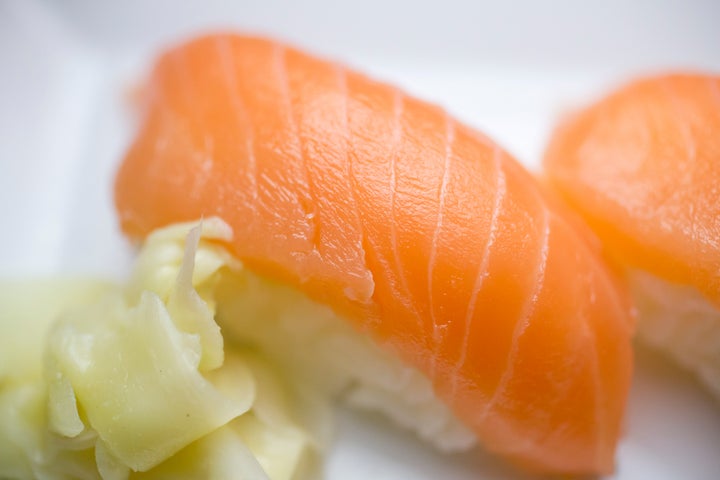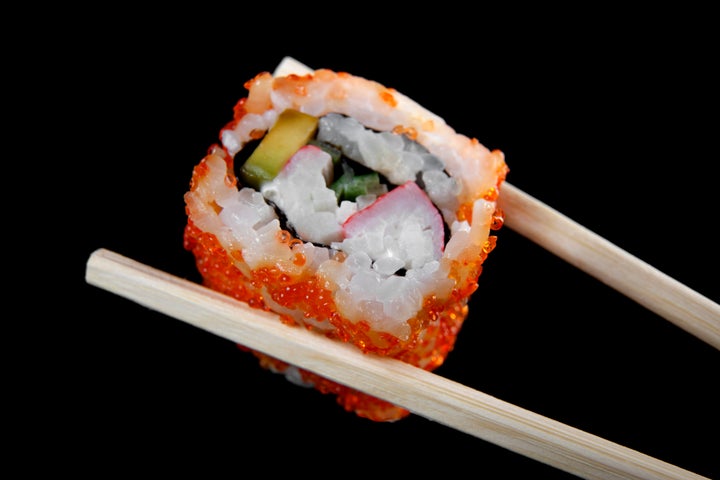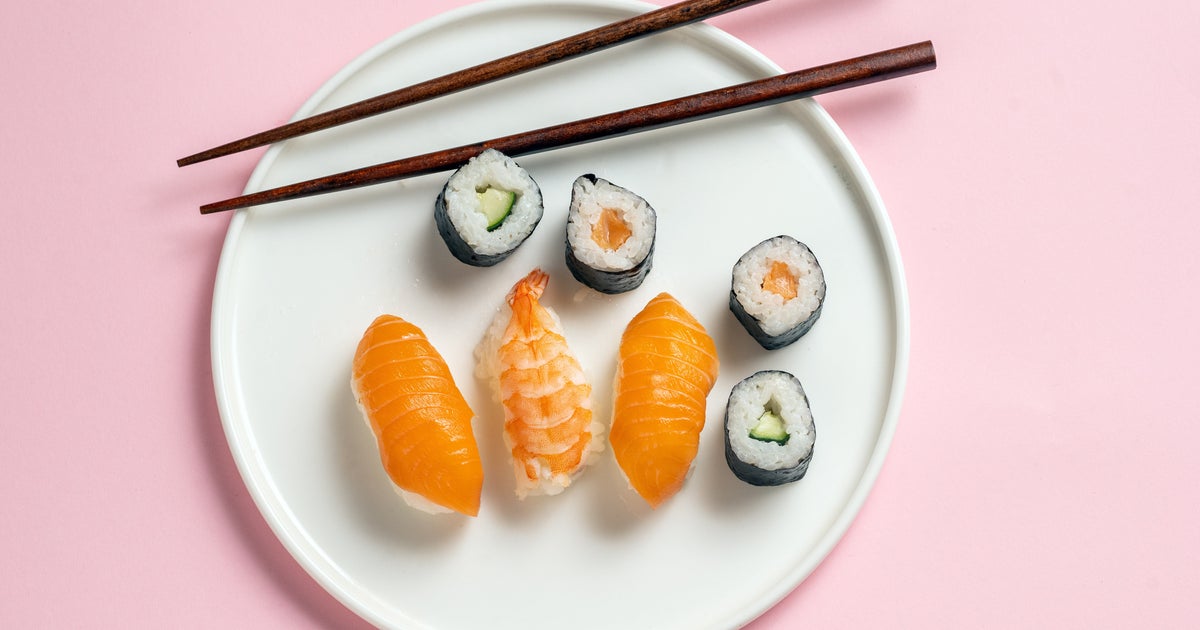You’ll rarely meet someone who only “kind of” likes sushi. If you’re a sushi fan, you really love it. Maybe you’re the rainbow roll type, meaning you get to sample nearly every type of fish the restaurant has in stock that day, or you like to stick to a tried-and-true favorite, like tuna nigiri.
Still, as a sushi lover myself, one little worry always nags at me right before I dig into a tray of salmon avocado rolls: I’m eating raw fish, which means my favorite takeout meal could lead to a vicious bout of food poisoning.
With that in mind, I decided to talk to a handful of experts to find out which types of raw fish actually put me at the greatest risk of food poisoning, and which ones I can feel relatively safe eating. Here’s what they had to say.
This type of sushi puts you at the greatest risk for food poisoning.
According to Sam Martin, a senior director and food safety expert at Microbac Laboratories, the amount of harmful bacteria living on raw fish depends mostly on how the fish was raised and stored, rather than on the species of fish you’re consuming.
“The most common bacteria associated with raw fish are Listeria monocytogenes, Vibrio, and Salmonella,” he said. “The incidence of these bacteria is less species-dependent and more a function of the water the fish lived in and the way it was processed and stored after it was caught. Storing the fish below 40°F will delay the growth of any bacteria of concern.”
You can certainly ask your server how the fish on the menu was raised, stored and processed, but they may not know the answer. So, in the absence of that information, Martin suggests steering clear of raw salmon.

ullstein bild via Getty Images
Salmon has a higher risk of parasites than other fish, as there’s been an uptick in salmon carrying tapeworms in recent years. The risk of infection is highest when eating raw or undercooked salmon, like the kind found in sushi. Raw salmon can also carry more common harmful bacteria like salmonella, Vibrio vulnificus, and E. coli.
Eels are also more likely to carry parasites than other fish types, but because raw freshwater eels are toxic to humans, eel (unagi) is served cooked at sushi restaurants. This greatly reduces the risk of food poisoning, since heat kills bacteria.
Tuna also carries a risk when served raw, but it’s less likely to contain parasites than salmon.
This is the safest type of sushi you can eat.
If you’ve ever derived a sense of security from the term “sushi-grade fish,” Dr. Will Bulsiewicz, a board-certified gastroenterologist, has some bad news. The term “sushi grade” is not regulated or defined by the Food and Drug Administration, so while it could mean safer and higher-quality fish, it could also mean nothing at all.
Whether you’re immunocompromised or just want to avoid foodborne illnesses at all costs, your best bet is to opt for cooked sushi. “Much like cooking our eggs or throwing out the green potatoes, there are common-sense ways that we can protect ourselves while enjoying delicious sushi,” Bulsiewicz said.
“The most obvious is to cook the seafood,” he explained. “This is commonly found in shrimp tempura rolls, spider rolls with fried soft-shell crab, or unagi rolls with grilled eel. The classic California roll is low risk because the crab is imitation, meaning it’s not crab. Sorry if I ruined California rolls for you.”
Martin agreed. “Cooking is the only surefire way to reduce the likelihood of foodborne illness from bacteria, parasites and viruses,” he said. “Sushi containing shrimp or ‘crab’ (often surimi, which is imitation crab made from pollock) is usually cooked. You can also opt for vegetarian options containing avocado, cucumber, tofu or other items.”

Here are the best ways to handle and store raw fish.
Although we know consuming raw fish increases our risk for foodborne illnesses, you don’t hear about people going to the ER for sushi-related food poisoning very often (although it does happen).
This is because most sushi restaurants have strong measures in place to keep people as safe as possible when they’re consuming their raw dishes. Ultimately, that matters more than the type of raw fish consumed.
“To destroy any parasites, the fish should have been blast frozen to -4°F and held for seven days,” Martin said. “Once thawed, the flesh should be shiny and translucent, with no slime or discoloration. The fish should smell fresh — if it smells sour or overly ‘fishy,’ you should not consume it.”
While you may not know if the sushi you’re consuming has been blast-frozen, a quick smell test can probably tell you any important information you need to know about the safety of your sushi. However, immunocompromised or pregnant people should avoid consuming raw fish in their sushi because they are more vulnerable to parasites.
With all of that in mind, dig in!

